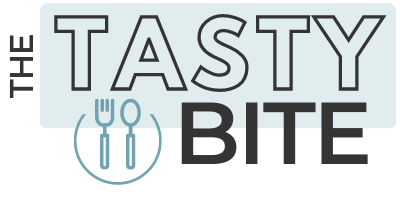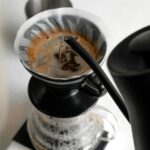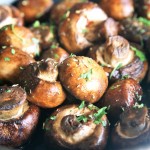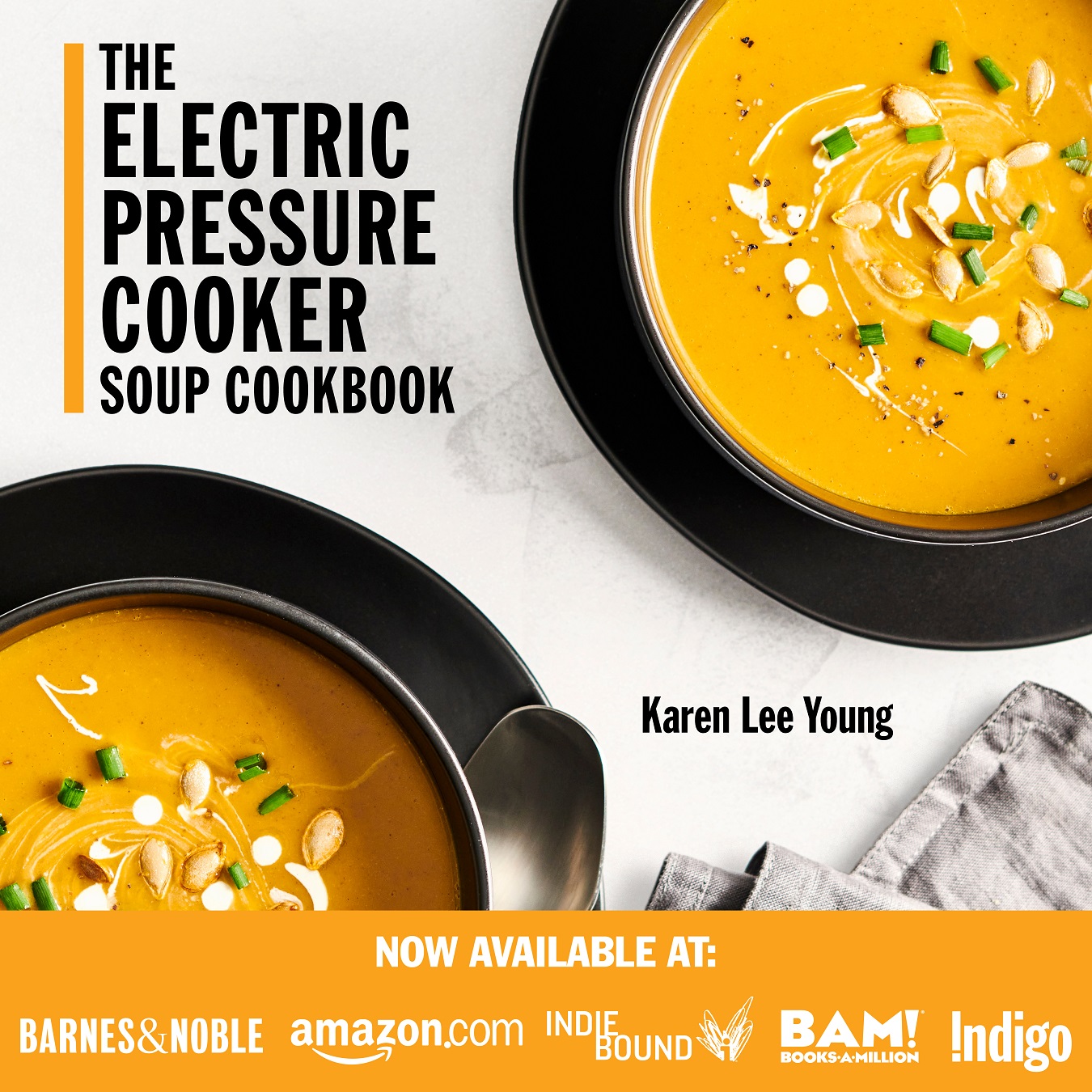Last Updated on February 13, 2025 by Karen
Discover the differences between cone vs basket coffee filters, including their impact on brewing, coffee flavor, and filter materials. Learn which filter type suits your coffee maker, from drip machines to pour-over setups, and how it affects your brew’s taste and sustainability.
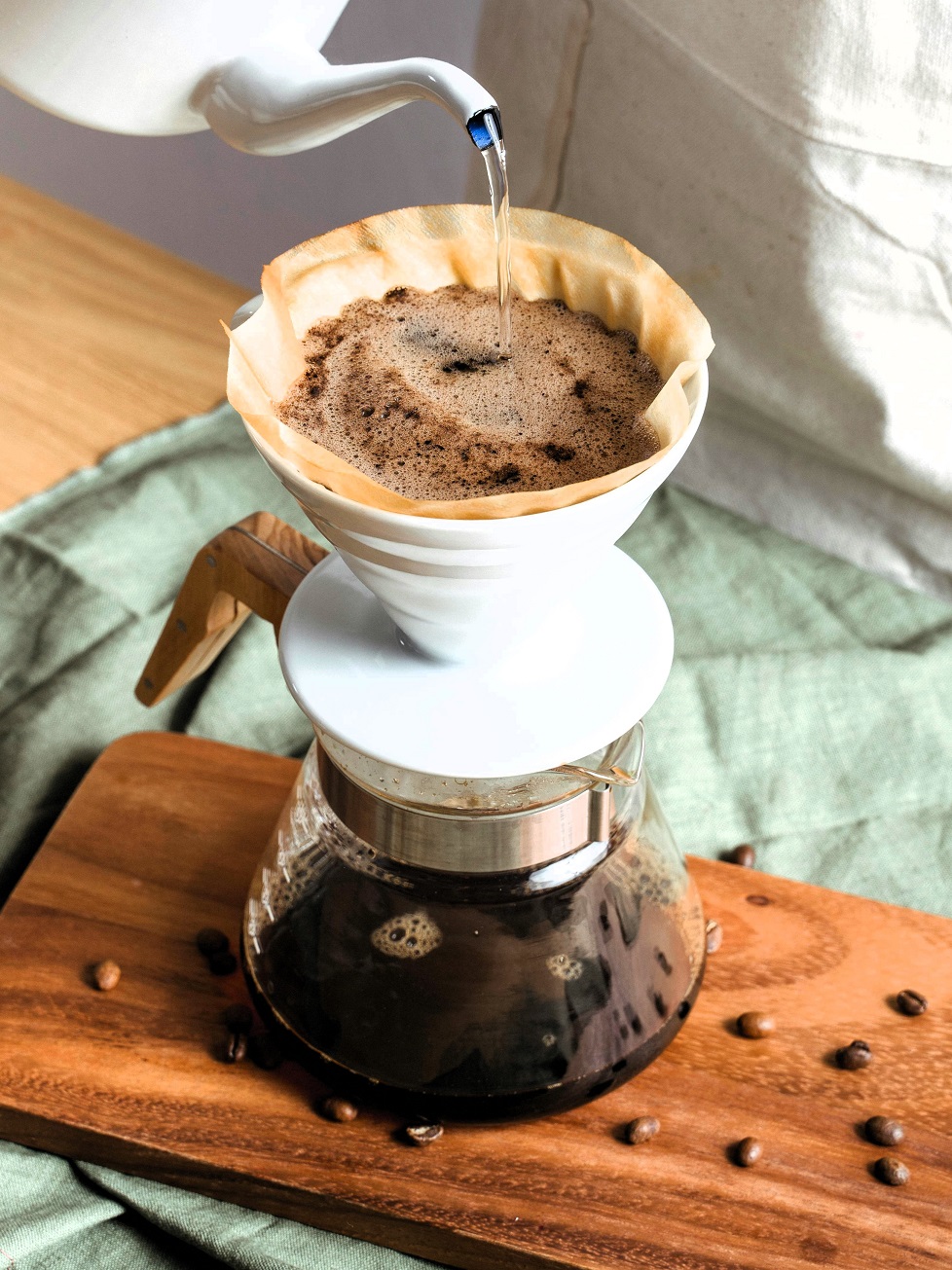
When it comes to making a great cup of coffee, the coffee filter might not be the first thing that comes to mind, but it plays a pivotal role in the overall brewing process. Whether you’re a coffee professional, a passionate coffee lover, or someone just trying to find the best way to brew at home, choosing the right type of coffee filter can drastically affect the taste of your coffee. Two of the most popular options are conical shape filters and basket filters, each offering distinct features that can enhance or alter the flavor profile of your cup.
The main difference between cone coffee filters and basket filters lies in their shape, which influences how hot water interacts with the coffee grounds, the flow rate, and the resulting flavor of the brew. But it’s not just about shape; the material of the filter—whether paper, metal, or cloth—adds another layer of consideration. Add to that the growing awareness of environmental concerns, and you find yourself navigating through a variety of filter materials and types of coffee filters available in the market today.
Choosing between conical filters or basket filters requires more than just a glance at the packaging. It involves understanding how each type affects your brewing process, grind size, and ultimately, the taste of your coffee. This decision is also influenced by the specific brewing method or machine you use, whether it’s a pour-over setup, a drip coffee maker, or a French press.
In this post, we’ll dive deeper into the cone vs basket filter debate, explore how different filter materials impact the flavor, and provide a rundown of popular brewing machines and the filters they require. Whether you prefer a cleaner cup, a bold brew, or something in between, knowing the nuances of these filters can help you create better coffee every time.

Coffee Makers and Filter Types: Which Machines Use Which Filters?
Choosing the right coffee filter also depends on the brewing method and machine you’re using. Different coffee makers are designed for specific types of filters, and selecting the wrong one can lead to a subpar brewing experience. Here’s a closer look at some of the most popular coffee brewing machines and the different shapes of filter types they require.
1. Drip Coffee Makers
Drip coffee makers are some of the most widely used coffee machines, and they typically use basket filters or cone shape filters. The choice of filter often depends on the model and brand of the coffee maker.
- Basket filters: Many drip coffee makers use flat-bottom filters, which fit into the machine’s filter basket. These filters are great for brewing larger quantities of coffee and work well with medium to coarser coffee grinds. Popular brands like Cuisinart, Hamilton Beach, and Black+Decker usually come with a basket filter design. If you have a Cuisinart Brew Central or a Hamilton Beach FlexBrew, you’ll typically find that these models use basket-style filters.
- Cone filters: Some drip coffee makers, such as those made by Bonavita, Technivorm, and Braun, require cone-shaped filters. These cone coffee filters (often labeled as #4 or #2) are known for producing a more complex and flavorful cup due to the slower water flow through the coffee grounds. Models like the Technivorm Cup-One and Bonavita Coffee Maker are known for using cone filters.
2. Pour-Over Coffee Makers
If you’re into the pour-over brewing method, you’ll likely use a cone filter. The pour-over method, popularized by brands like Hario and Chemex, is known for its ability to give coffee lovers complete control over the brewing process. Here’s the filter breakdown:
- Hario V60: This iconic pour-over dripper uses cone-shaped filters, which are perfect for a more hands-on brewing experience. With the V60, the grind size is important because the hot water flows through the coffee grounds at a slower rate compared to a traditional drip coffee maker.
- Chemex: The Chemex coffee maker also uses cone-shaped filters, but they are thicker than most other filters, which helps to filter out more oils and coffee fines. This results in a cleaner cup with a smooth, crisp taste, often preferred by those who appreciate a less oily brew. The Chemex filter is typically white or unbleached, and is designed for those brewing larger quantities of coffee, with the Chemex Classic Series brewing up to 10 cups.
3. Single-Serve Coffee Makers
For single-serve coffee makers like the Keurig or Nespresso, the filter design varies significantly from traditional drip coffee makers. These machines typically use pre-packaged coffee pods (e.g., K-Cups or Nespresso pods), which means you don’t need to worry about filter shape. However, for reusable pods that allow you to use your own ground coffee, you’ll need a compatible metal or cloth filter that fits inside the pod system.
4. French Press
The French press is one of the few coffee brewing methods that doesn’t use filter paper or basket filters. Instead, it relies on a metal mesh filter to separate the ground coffee from the brewed coffee. This metal filter allows more of the coffee oils to remain in the brew, which gives the coffee a rich, full-bodied flavor. The French press method is often preferred by coffee drinkers who enjoy bold, robust coffee with a thicker consistency.
5. Cold Brew Coffee Makers
For cold brew coffee makers, some models use cloth filters or metal mesh filters, while others may require a specific basket or cone-shaped filter. These filters are designed to handle the unique brewing process, where coffee grounds are steeped in cold water for an extended period (12-24 hours). The result is a smoother, less acidic brew that many coffee drinkers love. Brands like Toddy and Oxo offer cold brew makers that typically use cloth or metal filters for the steeping process.
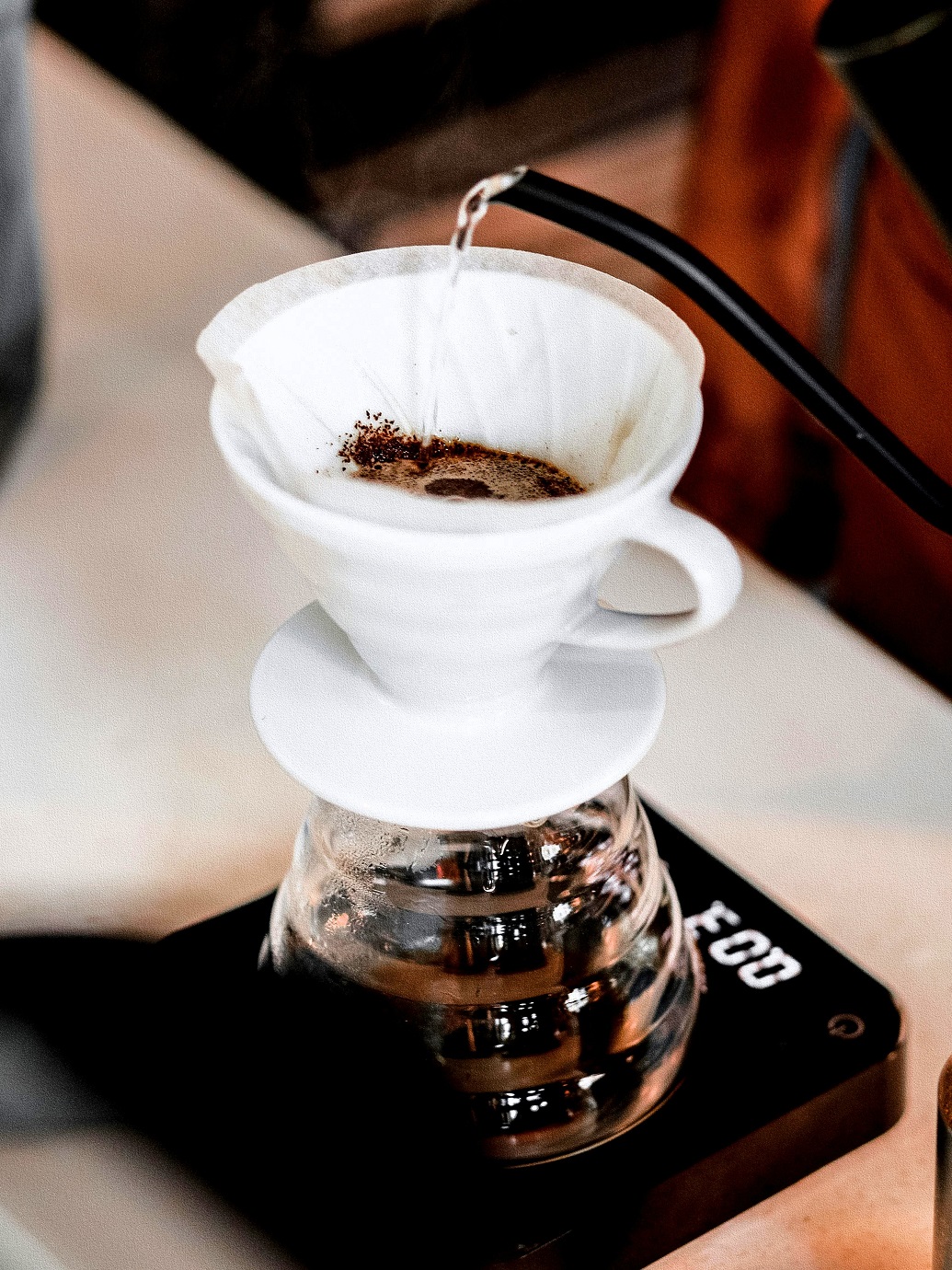
Filter Materials: Impact on Flavor and Environmental Considerations
When selecting a coffee filter, it’s not just about the different sizes, shape of the filter or the material; it’s about how these elements influence the taste of your coffee, its flavor profile, and how environmentally friendly your choice is. The different material plays a key role in how the hot water interacts with the coffee grounds, impacting the coffee flavor, clarity, and mouthfeel. There’s a big difference in the coffee flavor produced by various filters, whether they’re paper coffee filters, metal coffee filters, or cloth coffee filters. In this section, we’ll explore the impact of different filter materials, including reusable filters, and how they relate to environmental concerns and overall brewing experience.
Paper Coffee Filters: Clean and Crisp
Paper filters, especially those used in cone coffee filters or flat-bottom filter baskets, are the most common type used in drip coffee machines. The most well-known types of paper filters are either white filters or brown filters, with the latter often being unbleached. Paper filters are great at delivering a clean, refined cup by filtering out most of the coffee oils and fine coffee particles, which results in a clear, crisp brew.
Flavor Impact: The primary advantage of paper coffee filters is their ability to produce a cleaner cup, which highlights the sweeter notes of the coffee and reduces any woody flavors or bitterness. Paper filters are often chosen for their ability to eliminate fine particles from the coffee, providing a brew with minimal sediment. The shape of the filter also plays a role in how the coffee extracts flavors. Cone-shaped filters like the Hario V60 or Chemex encourage a slower extraction process, which can emphasize certain characteristics of the coffee, such as acidity and complexity, especially for coffees roasted at a lighter roast level. However, paper filters can sometimes leave behind a subtle papery taste, especially if not rinsed properly, as it can trap some residual flavors.
Environmental Considerations: Traditional paper filters, while biodegradable, do contribute to single-use waste. However, brown paper filters (often unbleached) tend to have a smaller environmental footprint than white filters. The bleaching process used to create white filters involves chemicals, which can be a concern for more environmentally-conscious consumers. Luckily, unbleached filters are available at most grocery stores, making them a better option for those looking to reduce waste.
Despite being disposable, paper filters are an easy and convenient option, with various sizes available to fit most drip coffee makers, from smaller single-serve sizes to larger sizes for brewing large quantities of coffee.
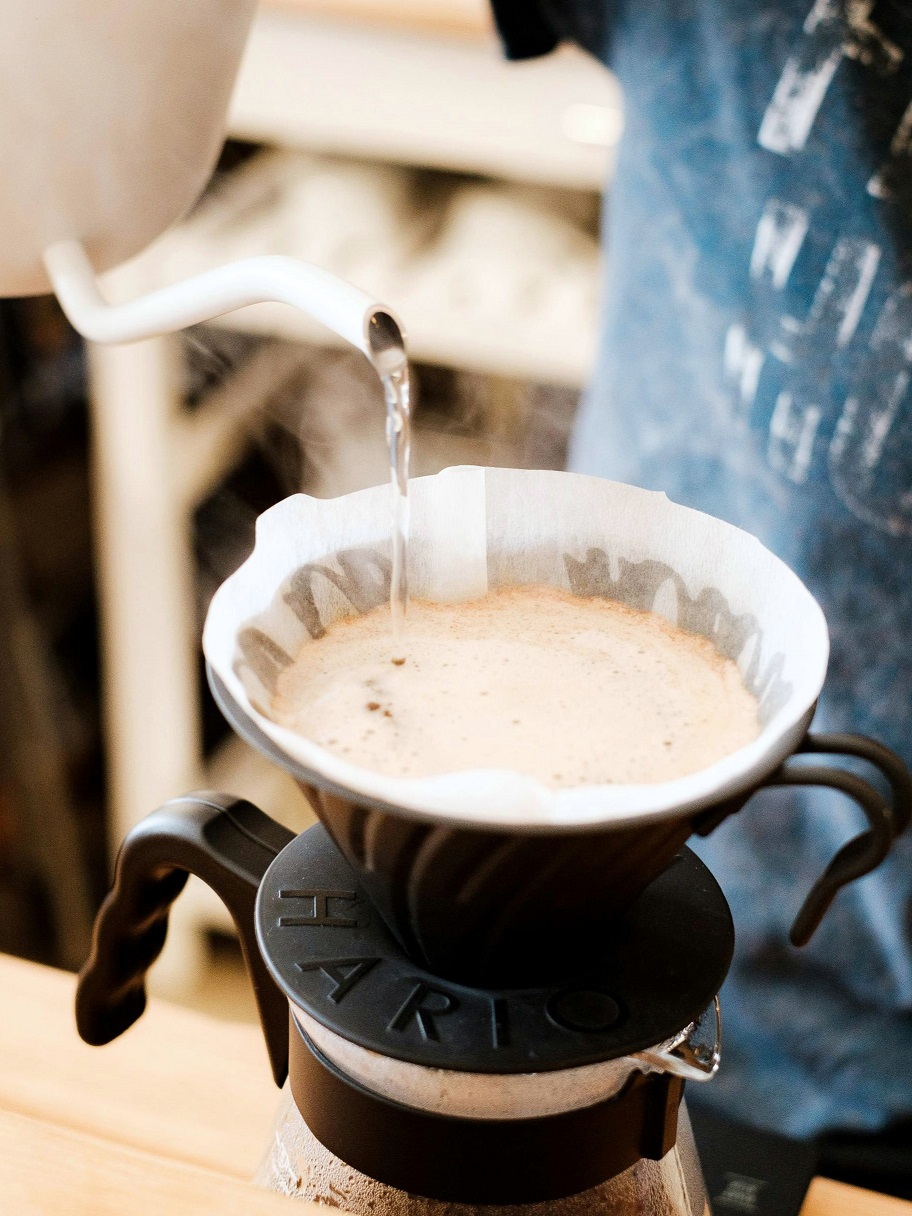
Metal Coffee Filters: Richer Flavor and Reusability
Metal filters—whether stainless steel or different materials—offer a reusable, more sustainable option compared to paper filters. They’re commonly used in drip coffee machines, pour-over systems, and even some French presses. These filters are typically permanent filters, designed to last for years with proper care. Stainless steel filters, in particular, allow for superior filtration of coffee oils, enhancing the coffee flavor and giving it a fuller, richer body.
Flavor Impact: The biggest difference with metal coffee filters is the coffee oils that they allow to pass through. These oils add depth and complexity to the coffee, giving it a richer mouthfeel than paper filters. Metal filters tend to retain more of the flavor and aroma, especially with medium and dark roast levels, where the oils are key to the coffee’s woody flavors or chocolatey notes. However, because metal filters let through fine coffee particles, the brew may sometimes be grittier than one made with a paper filter. For this reason, the grind size is crucial when using a metal coffee filter—a coarser grind helps prevent an overly cloudy or gritty brew.
Environmental Considerations: Reusable coffee filters are the best choice for sustainability. Unlike paper filters, which are single-use, metal filters can last a lifetime, significantly reducing waste. Reusable filters, whether stainless steel or other materials, are a fantastic option for eco-conscious coffee drinkers who are looking to reduce their environmental impact. The fact that these filters are reusable also makes them cost-effective over the long term.
Cleaning metal filters is easy, though some users may find it more time-consuming compared to simply discarding a paper filter. In any case, the reusability and longevity of metal filters are key reasons why many coffee professionals and coffee lovers opt for them. Plus, you can find reusable filters in various sizes and shapes to fit different brewing methods, from flat bottom filter basket type to cone types.
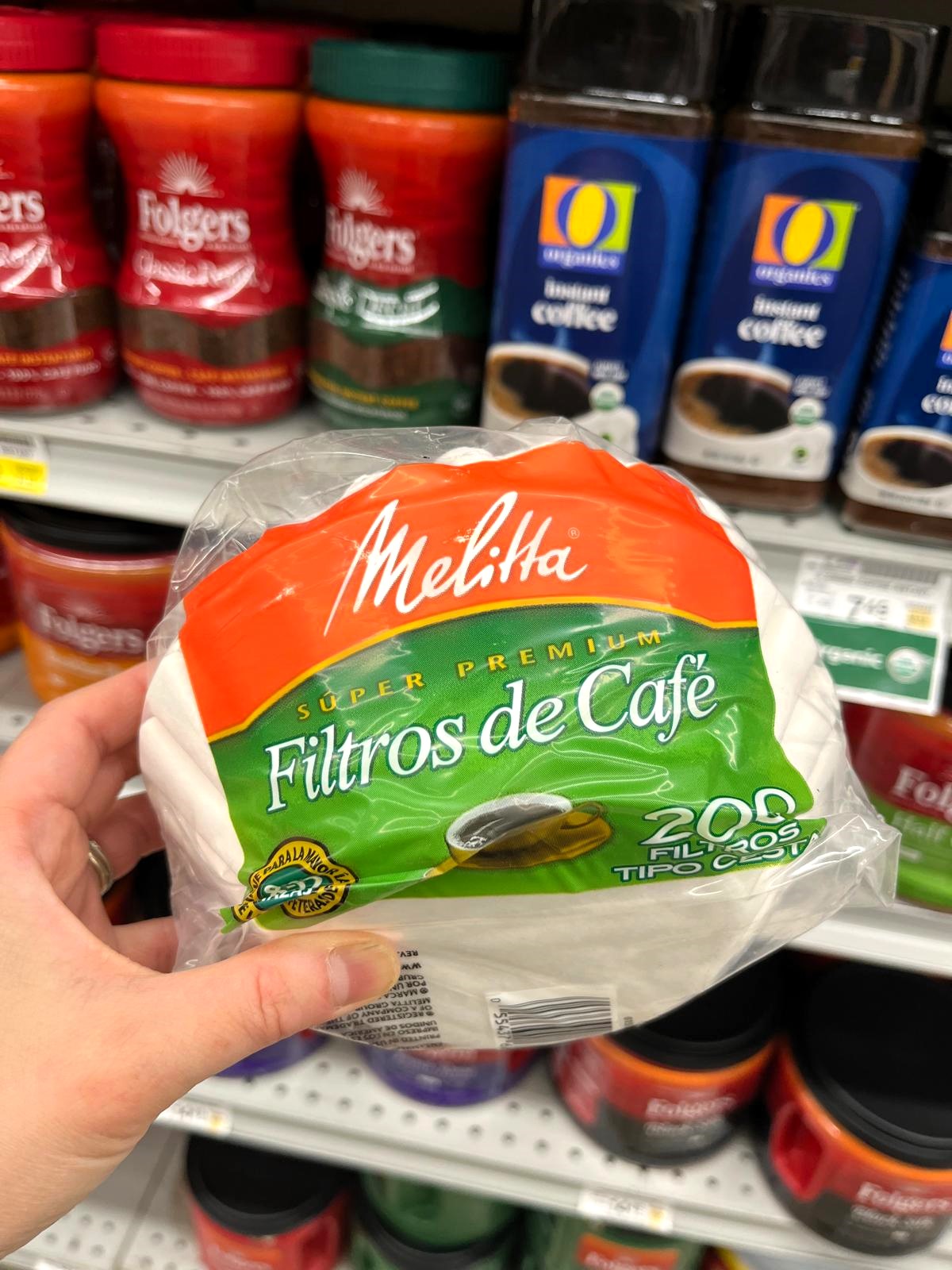
Cloth Coffee Filters: Balanced Flavor and Sustainability
Cloth filters—typically made from cotton or other natural fibers—offer a balance between the clarity of paper filters and the richness of metal filters. These filters are often used in pour-over coffee makers, and while less common in standard drip coffee makers, they are still beloved by coffee aficionados who want an eco-friendly alternative.
Flavor Impact: Like metal filters, cloth coffee filters allow more of the coffee oils to remain in the brew, leading to a full-bodied, rich cup of coffee. However, unlike metal filters, cloth filters filter out more of the fines, which results in a smoother, cleaner cup. The cloth filter produces a balanced flavor, with less sediment and a bit of complexity—the ideal choice for those who like their coffee to have a clean finish but still enjoy the full-bodied richness that comes with the oils. Cloth filters are particularly popular for those brewing different coffees that require precise extraction methods.
Environmental Considerations: Cloth coffee filters are reusable and provide an excellent alternative for those looking to minimize waste. However, they require a bit more maintenance than metal filters, as they need to be washed and dried after each use to prevent the build-up of coffee oils and mold. Some coffee drinkers prefer cloth filters because they can be washed multiple times, making them an excellent choice for reducing the need for disposable options.
Many cloth filters are made from organic cotton or bamboo filters, making them a sustainable choice. However, they may not last quite as long as metal coffee filters, and some cloth filters may degrade more quickly over time. Still, they remain a more eco-friendly option than single-use filters like paper towels or cupcake liners, which are sometimes used in a pinch as makeshift filters.
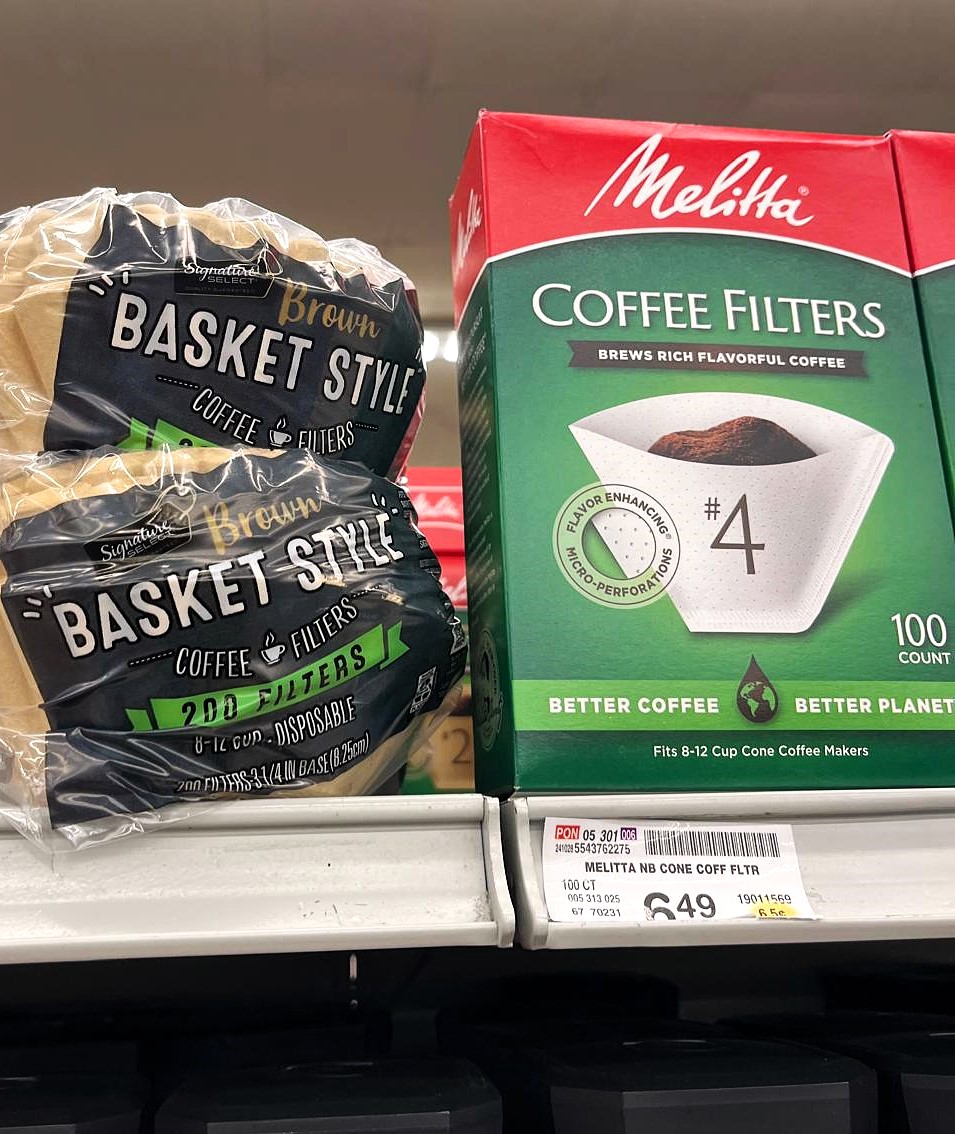
Disk Filter: A Specialized Option
For specific brewing methods such as Aeropress or Siphon brewers, disk filters made from metal or cloth are used. These filters are typically smaller and flatter than traditional filters and provide a unique brewing experience that emphasizes a clean, yet rich flavor profile. The use of disk filters is ideal for coffee drinkers seeking reusable filters that allow them to experiment with different brew ratios while still providing a clean cup.
How to Choose the Best Filter?
Choosing the right coffee filter boils down to personal preference and what you value most in your coffee. If you’re looking for convenience and ease of use, paper filters (especially white filters) are the most common and widely available. They are perfect for larger quantities of coffee and are great for anyone using a drip coffee machine with flat-bottom filter baskets. If you’re seeking a better cup of coffee with more depth and less waste, metal coffee filters (like stainless steel) might be your best choice. Alternatively, if you’re looking for a balance of flavor and eco-friendliness, cloth coffee filters could be the ideal option for you.
Ultimately, the taste of coffee depends not only on the type of coffee filter you use but also on the grind size, roast level, and brewing method. Whether you’re brewing smaller quantities of coffee or preparing for a big batch, understanding the filter materials and their impact on extraction will help you brew the best cups of coffee possible.
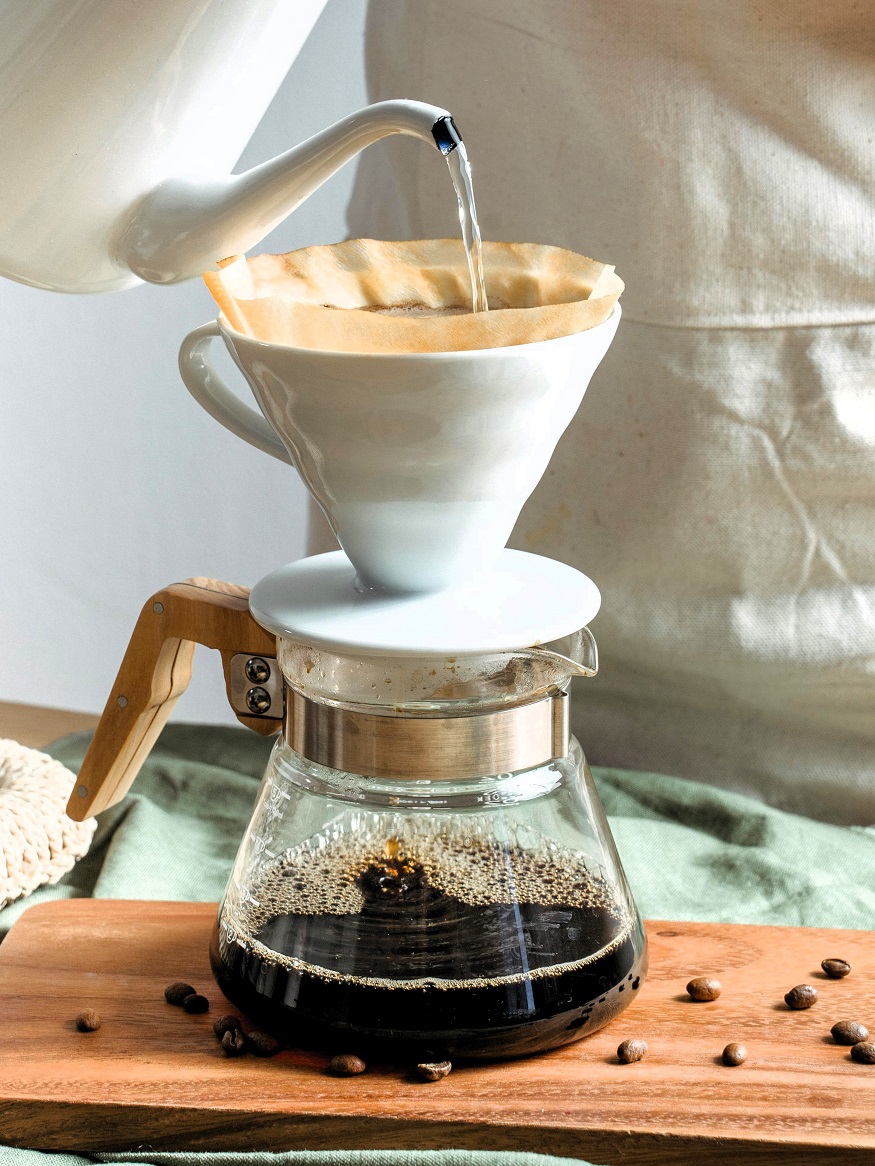
Personal Preference Makes the Difference
Choosing between conical coffee filters and basket filters depends on a combination of factors, including the brewing method, grind size, and the type of coffee you prefer. While coffee cone filters are great for a more complex, flavorful cup with better extraction, basket filters are ideal for those who want convenience and are brewing larger quantities of coffee. Furthermore, filter materials—from paper to metal—will influence the texture, clarity, and richness of the brew.
In the end, the best coffee filter is the one that suits your personal preference and enhances the flavor of your coffee to your liking. Whether you’re brewing small quantities with a Hario V60 or large quantities with a Cuisinart drip coffee maker, understanding the differences between filter types can help you brew your best cup of coffee every time.
